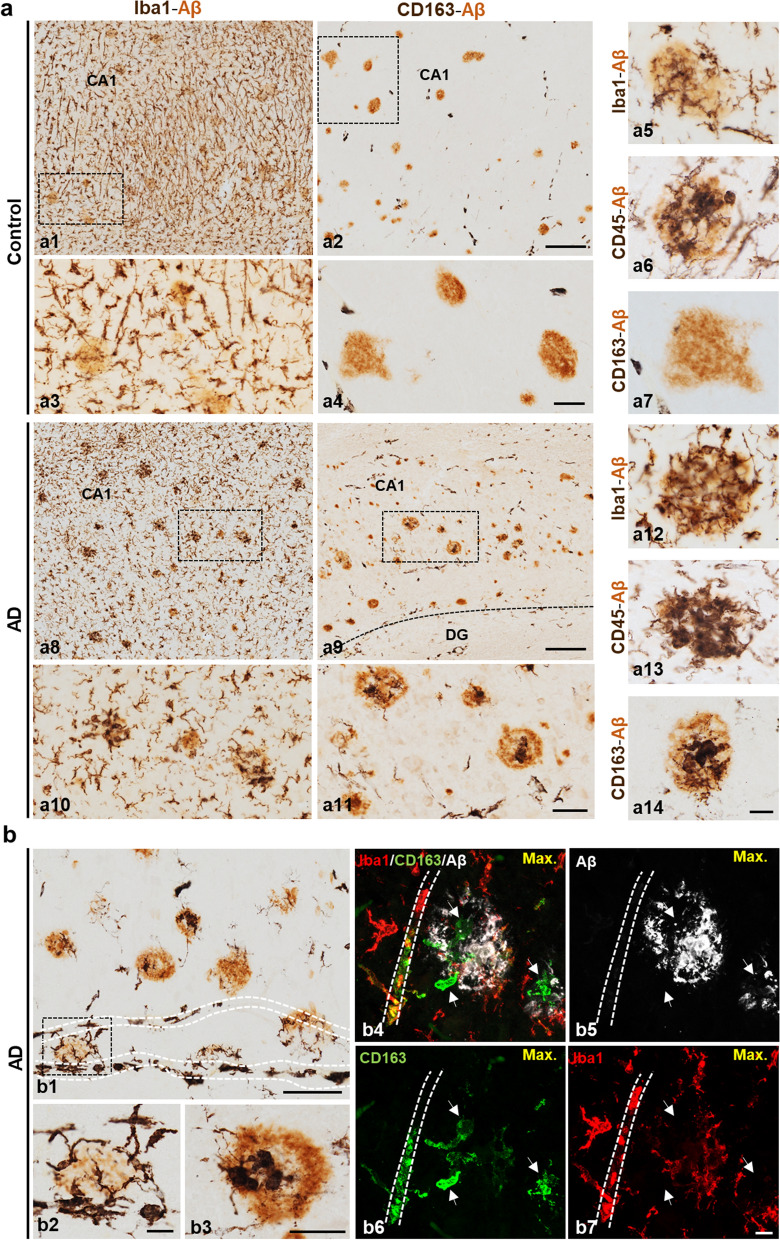Fig. 3.
Only Abeta plaques from AD hippocampus are infiltrated with Cd163-positive cells. (a) Representative images of Braak II CERAD B (a1–14; control) and Braak V–VI CERAD C (a8–14; AD) cases immunostained for Abeta deposits (OC antibody, light brown) and different myeloid markers (Iba1, Cd163 and Cd45, dark brown). Plaques from the same region of Braak II samples, reactive for microglial markers Iba1 (a1, boxed area a3; higher magnification in a5) and Cd45 (a6), were negative for Cd163 cells (a2, boxed area a4; higher magnification in a7). On the contrary, Abeta deposits from AD hippocampus were infiltrated with Cd163-positive cells (a9, boxed area a11; higher magnification in a14) in addition to Iba1 (a8, boxed area a10) and Cd45 (a13) association. (b) Representative images of Braak V–VI samples showing Cd163-infiltrating Abeta plaques (b2–5) in close association with blood vessels (dashed line in b1 and b4-b7). The sections were double immunostained using OC (light brown color) and Cd163 (dark brown color) antibodies (b1–3) for bright field microscopy, or triple immunostained for Abeta (OC, white, b4), Cd163 (green, b5), Iba1 (red, b6) and the combination (b7) for confocal microscopy. CA1: cornu ammonis; DG: dentate gyrus. Scale bars: a1, a2, a8 and a9, 200 μm; b1, 100 μm; a3, a4, a10, a11, b2 and b4, 50 μm; a5, a6, a7, a12, a13, a14, b3 and b5, 20 μm

